For Photographer Appreciation Month, CHM Abakanowicz Research Center associate Annika Kohrt writes about our holdings on George R. Lawrence, a Chicago inventor and photographer with larger than life ambitions and a portfolio to match.
I love the story of a tinkerer. George R. Lawrence (1868–1938) was a relatively fearless Chicago inventor who made several innovations in the field of photography. When I say “relatively fearless,” I mean he was creating small explosions to light his photographs and flying hot air balloons to get aerial photographs in the time before airplanes. He eventually had enough life-threatening experiences in the balloons that he switched to designing unmanned kites, understandably.
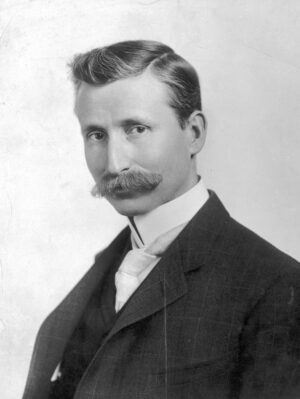
Undated portrait of George R. Lawrence. CHM, ICHi-011070
Like Daniel Burnham’s famous statement, “Make no little plans,” Lawrence was dreaming big—literally. He advertised “The Hitherto Impossible in Photography is Our Specialty,” and the first impossible feat in photography he took on was artificial lighting. Before flash bulbs and flood lights existed, photographers used magnesium chloride to generate a quick burst of light to get nighttime shots. Fire officials banned the use of this flash powder at large gatherings because of the danger of explosions, but Lawrence tinkered away at a magnesium formula until it “generated more light and less smoke.”
He then developed a system of portable towers connected by electrical circuits to make simultaneous sparks that ignited the powder in multiple places in a room and a canvas bag that dropped over the light to collect the smoke immediately after the picture. For this he earned the title “Flashlight Lawrence” among his friends, and he made good business photographing large indoor banquets and assemblies across the country. Lawrence also designed and developed his own panoramic banquet camera to capture a proportional image of each individual in a group picture.
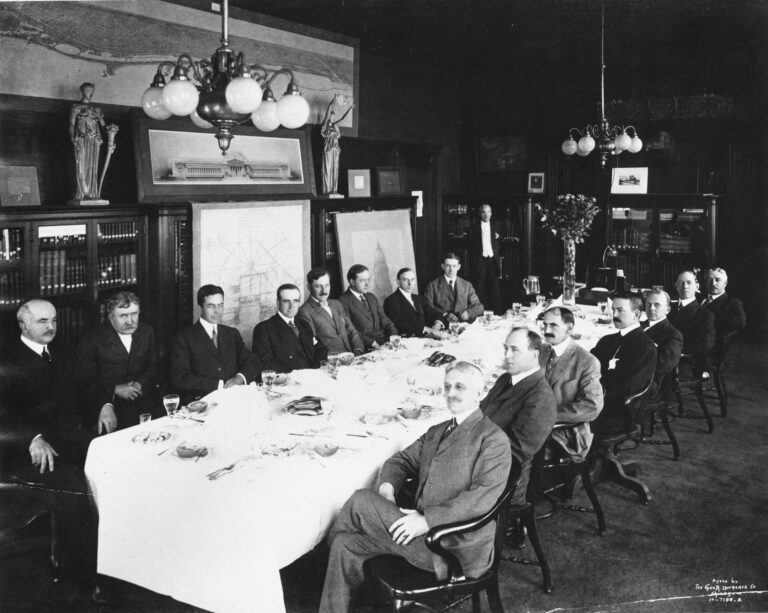
Committee on the Plan of Chicago in Daniel Burnham’s office, Chicago, c. 1908. Seated on the right side of the table: Edward B. Butler, Daniel H. Burnham, Charles D. Norton, Clyde M. Carr, Edward F. Carry, Edward H. Bennett, John DeLaMater, Charles G. Dawes. Seated on the left: John G. Shedd, Charles H. Thorne, Theodore W. Robinson, Emerson B. Tuttle, John W. Scott, John V. Farwell, Charles H. Wacker. CHM, ICHi-003560; George R. Lawrence Company, photographer
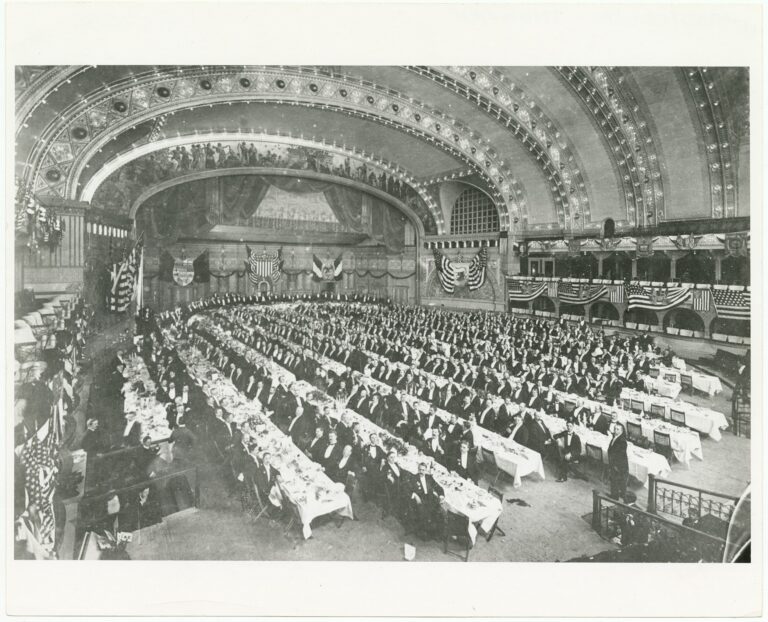
Undated photograph of banquet group at the Auditorium Theatre, Chicago. CHM, ICHi-000566; George R. Lawrence, photographer
Lawrence’s single-plate banquet panoramas caught the eye of personnel from the Chicago & Alton Railroad (this story has something for the train lovers out there too!), which in 1899 had just built the most symmetrical train in the world: with uniform windows, trucks, and cars. Commissioned to create a faultless single photograph of the beautiful train, Lawrence and J. A. Anderson built a giant camera that weighed 1,400 pounds and required 15 operators: the largest camera in the world for the “handsomest train in the world.”
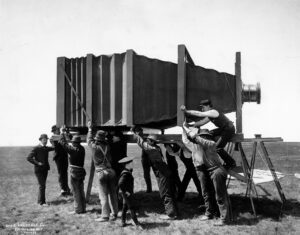
Men adjusting the bellows on George Lawrence’s Big Camera, 1911. CHM, ICHi-022529
Then, determined to outdo himself, Lawrence started making balloons to create urban panoramas from great heights. To great fanfare, he went up to capture the Armour Packing Plants, but he didn’t come down the way that he planned. The balloon broke from its ropes, and Lawrence and his camera fell from 200 feet, but they were caught 50 feet above the ground by telephone and telegraph wires! He immediately bought another balloon and got the stockyards photographs, but after a second mishap in Minnesota, he started working with unmanned kites.
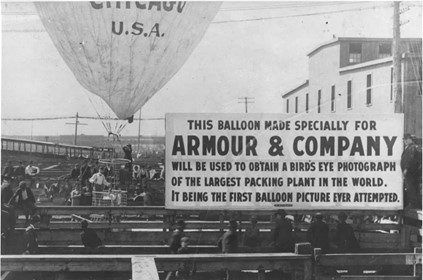
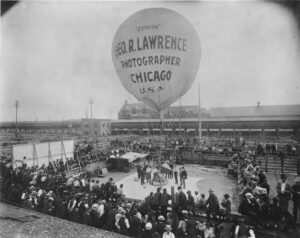
George R. Lawrence’s balloon at Armour & Company, June 21, 1901. CHM, ICHi-011036.
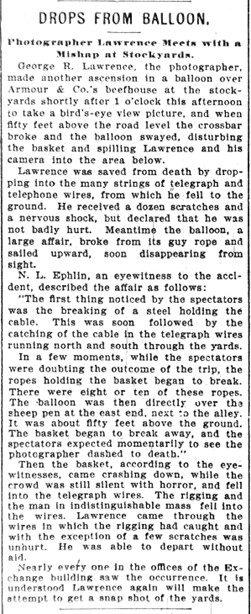
The incident captured in the Chicago Daily News, June 21, 1901.
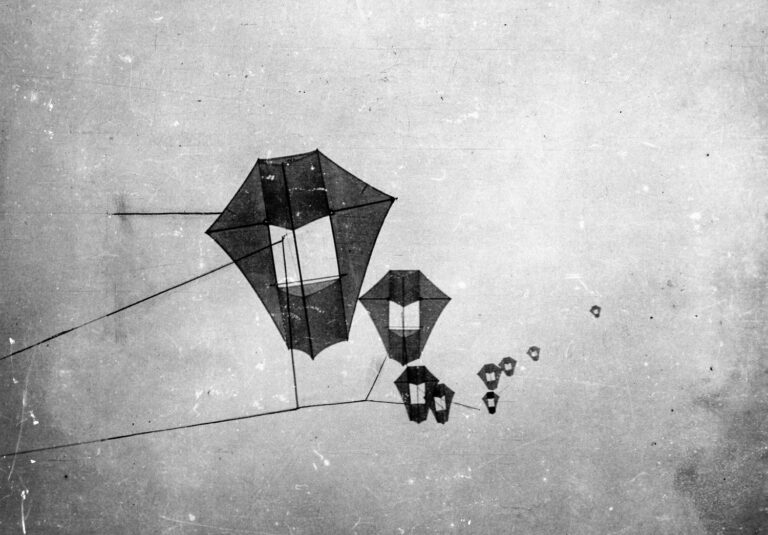
Kites used to support George R. Lawrence camera equipment, c. 1905. CHM, ICHi-011047; George R. Lawrence, photographer
Lawrence was a daredevil with flair, matched with mechanical genius and artistic ambition. A large portion of his large photographs are in our collection, and you can view them for free at the Abakanowicz Research Center. And if you’re interested in bird’s-eye views of Chicago, we have plenty of resources beyond Lawrence’s photographs. Plan your visit today!
Additional Resources
- View the finding aid for the George R. Lawrence Collection, 1900–1910
- Peruse our online image portal CHM Images
Comments